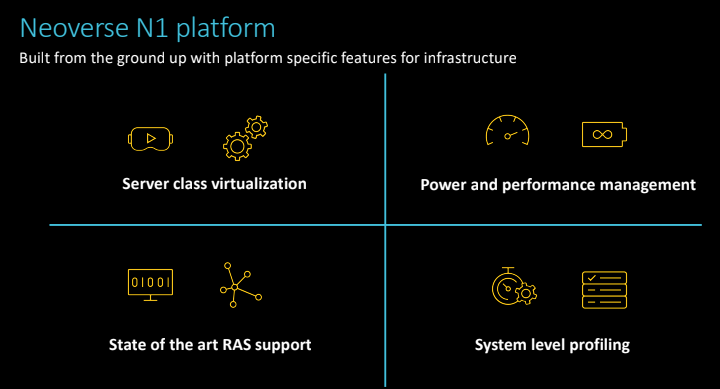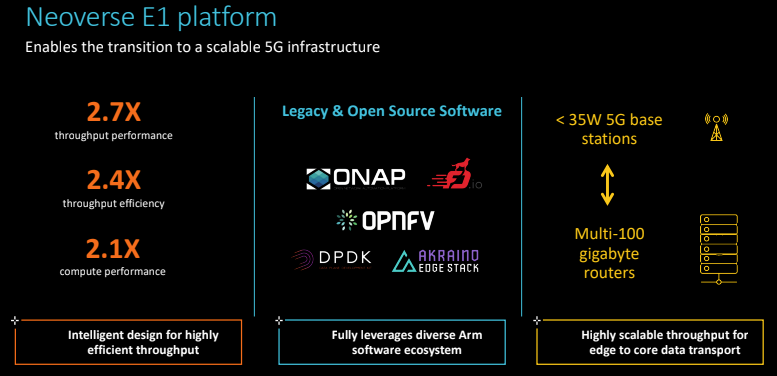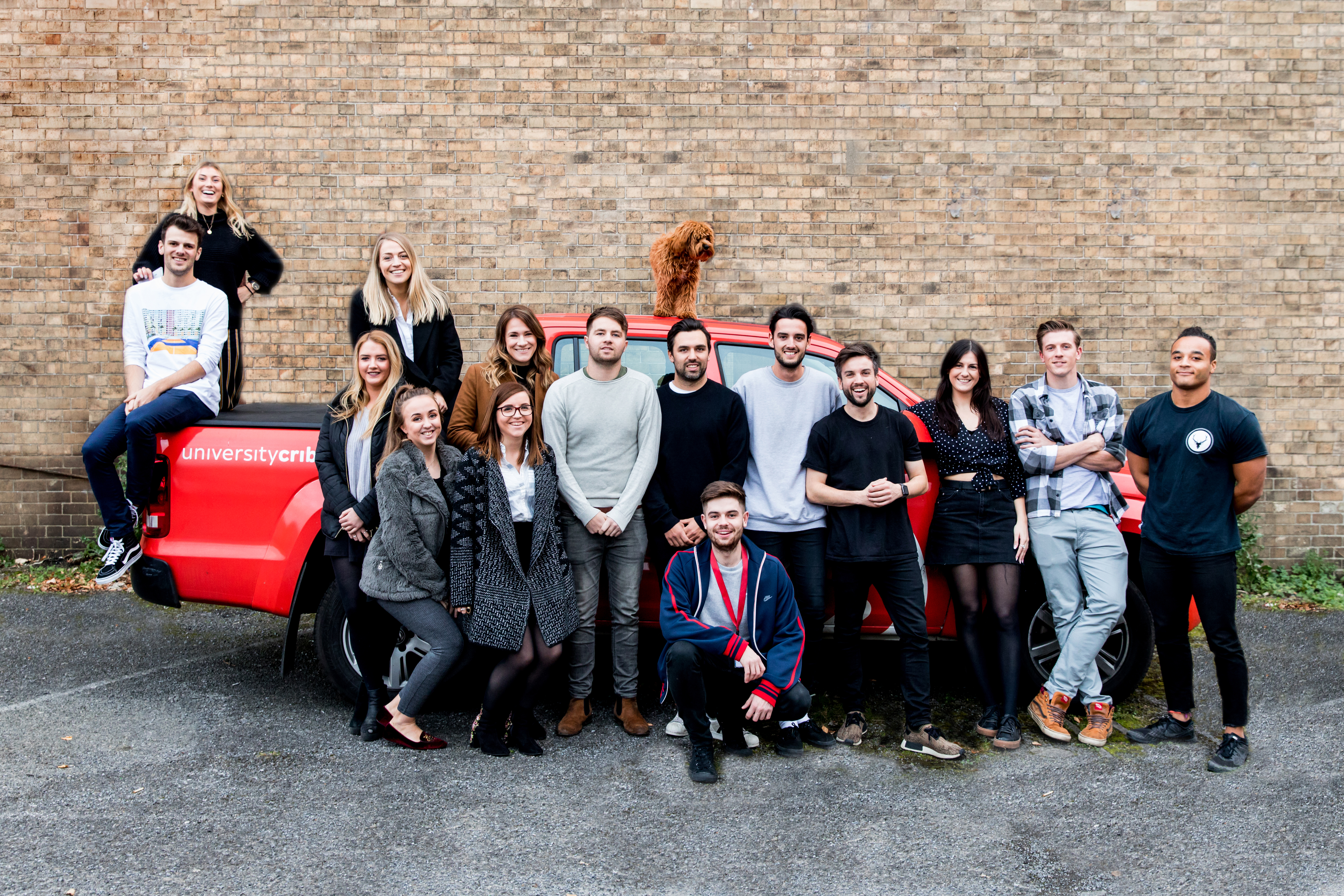MLG co-founder Mike Sepso joins 100 Thieves board of directors
Mike Sepso has joined the board of directors for 100 Thieves, an esports and content creation brand.
Sepso co-founded Major League Gaming in 2002, bringing the first true semblance of infrastructure to competitive gaming. MLG became the biggest independent esports league in the world, and played a big part in the evolution of esports as we know it today. In fact, MLG secured the first televised esports series ever with NBC sports, and eventually launched its own esports streaming platform.
MLG was acquired for $46 million by Activision Blizzard in 2016, but still lives as an esports content hub for Activision Blizzard titles like Call of Duty and Overwatch.
Sepso joins the 100 Thieves board alongside 100 Thieves founder and CEO Matthew “Nadeshot” Haag, president and COO John Robinson, Jake Cohen from Detroit Venture Partners and Scooter Braun (entertainment industry mogul who represents Justin Bieber and Ariana Grande).
“Mike is the godfather of esports,” said Haag. “The most influential thing that happened in my career was seeing Halo 2 competitions on Major League Gaming on TBS on the weekends. It was just mind-blowing that kids like me could play games competitively.”
Currently, Sepso serves as chairman and co-founder of the Electronic Sports Group, which is an advisory firm for executives across the finance, media, advertising and sports industries as they navigate esports deals.
“[Haag] been able to move quickly and build something that transcends esports and esports teams and has become an increasingly significant mainstream brand, and that opens up a lot of business opportunities,” said Sepso. “The strategy that 100 Thieves has put in place, using esports and gaming personalities as a way to bring this brand to market, I think it could eventually be much more than that.”
Before founding 100 Thieves, Haag was a decorated pro player in his own right and continues to be a popular Twitch streamer and YouTuber. Many esports orgs are founded by former pros, but Haag has taken a Silicon Valley approach to building out 100 Thieves, at least with regards to pace.
100 Thieves built out professional teams for a variety of titles very quickly. The company also secured capital from the likes of Sequoia, Marc Benioff, Drew Houston, Dan Gilbert, Tao Capital and Advancit Capital. Alongside traditional VCs and tech angels, 100 Thieves has also gotten investment from Scooter Braun and Drake.
Total funding for the org is $25 million.
Beyond titles and professional teams, 100 Thieves is diversifying its product early as well, with a content creator house and a line of apparel coming this spring.
The company recently signed a deal with Totino’s (yes, the pizza rolls) that includes an upcoming docuseries that offers a look behind the scenes at the 100 Thieves Call of Duty team.
Powered by WPeMatico
Arm expands its push into the cloud and edge with the Neoverse N1 and E1
For the longest time, Arm was basically synonymous with chip designs for smartphones and very low-end devices. But more recently, the company launched solutions for laptops, cars, high-powered IoT devices and even servers. Today, ahead of MWC 2019, the company is officially launching two new products for cloud and edge applications, the Neoverse N1 and E1. Arm unveiled the Neoverse brand a few months ago, but it’s only now that it is taking concrete form with the launch of these new products.
“We’ve always been anticipating that this market is going to shift as we move more towards this world of lots of really smart devices out at the endpoint — moving beyond even just what smartphones are capable of doing,” Drew Henry, Arms’ SVP and GM for Infrastructure, told me in an interview ahead of today’s announcement. “And when you start anticipating that, you realize that those devices out of those endpoints are going to start creating an awful lot of data and need an awful lot of compute to support that.”
To address these two problems, Arm decided to launch two products: one that focuses on compute speed and one that is all about throughput, especially in the context of 5G.

The Neoverse N1 platform is meant for infrastructure-class solutions that focus on raw compute speed. The chips should perform significantly better than previous Arm CPU generations meant for the data center and the company says that it saw speedups of 2.5x for Nginx and MemcacheD, for example. Chip manufacturers can optimize the 7nm platform for their needs, with core counts that can reach up to 128 cores (or as few as 4).
“This technology platform is designed for a lot of compute power that you could either put in the data center or stick out at the edge,” said Henry. “It’s very configurable for our customers so they can design how big or small they want those devices to be.”

The E1 is also a 7nm platform, but with a stronger focus on edge computing use cases where you also need some compute power to maybe filter out data as it is generated, but where the focus is on moving that data quickly and efficiently. “The E1 is very highly efficient in terms of its ability to be able to move data through it while doing the right amount of compute as you move that data through,” explained Henry, who also stressed that the company made the decision to launch these two different platforms based on customer feedback.
There’s no point in launching these platforms without software support, though. A few years ago, that would have been a challenge because few commercial vendors supported their data center products on the Arm architecture. Today, many of the biggest open-source and proprietary projects and distributions run on Arm chips, including Red Hat Enterprise Linux, Ubuntu, Suse, VMware, MySQL, OpenStack, Docker, Microsoft .Net, DOK and OPNFV. “We have lots of support across the space,” said Henry. “And then as you go down to that tier of languages and libraries and compilers, that’s a very large investment area for us at Arm. One of our largest investments in engineering is in software and working with the software communities.”
And as Henry noted, AWS also recently launched its Arm-based servers — and that surely gave the industry a lot more confidence in the platform, given that the biggest cloud supplier is now backing it, too.
Powered by WPeMatico
Xage brings role-based single sign-on to industrial devices
Traditional industries like oil and gas and manufacturing often use equipment that was created in a time when remote access wasn’t a gleam in an engineer’s eye, and hackers had no way of connecting to them. Today, these devices require remote access, and some don’t have even rudimentary authentication. Xage, the startup that wants to make industrial infrastructure more secure, announced a new solution today to bring single sign-on and role-based control to even the oldest industrial devices.
Company CEO Duncan Greatwood says that some companies have adopted firewall technology, but if a hacker breaches the firewall, there often isn’t even a password to defend these kinds of devices. He adds that hackers have been increasingly targeting industrial infrastructure.
Xage has come up with a way to help these companies with its latest product called Xage Enforcement Point (XEP). This tool gives IT a way to control these devices with a single password, a kind of industrial password manager. Greatwood says that some companies have hundreds of passwords for various industrial tools. Sometimes, whether because of distance across a factory floor, or remoteness of location, workers would rather adjust these machines remotely when possible.
While operations wants to simplify this for workers with remote access, IT worries about security, and the tension can hold companies back, force them to make big firewall investments or, in some cases, implement these kinds of solutions without adequate protection.
XEP helps bring a level of protection to these pieces of equipment. “XEP is a relatively small piece of software that can run on a tiny credit-card size computer, and you simply insert it in front of the piece of equipment you want to protect,” Greatwood explained.
The rest of the Xage platform adds additional security. The company introduced fingerprinting last year, which gives unique identifiers to these pieces of equipment. If a hacker tries to spoof a piece of equipment, and the device lacks a known fingerprint, they can’t get on the system.
Xage also makes use of the blockchain and a rules engine to secure industrial systems. The customer can define rules and use the blockchain as an enforcement mechanism where each node in the chain carries the rules, and a certain number of nodes as defined by the customer must agree that the person, machine or application trying to gain access is a legitimate actor.
The platform taken as a whole provides several levels of protection in an effort to discourage hackers who are trying to breach these systems. Greatwood says that while companies don’t usually get rid of tools they already have, like firewalls, they may scale back their investment after buying the Xage solution.
Xage was founded at the end of 2017. It has raised $16 million to this point and has 30 employees. Greatwood didn’t want to discuss a specific number of customers, but did say they were making headway in oil and gas, renewable energy, utilities and manufacturing.
Powered by WPeMatico
Xiaomi’s Mi 9 includes a triple lens rear camera and wireless charging
Mobile World Congress, the mobile industry’s annual shindig, is next week, but Xiaomi can’t wait to reveal its newest top-end phone. The Chinese company instead picked today to unveil the Mi 9.
Once again Xiaomi’s design ethic closely resembles Apple’s iPhone, with a minimal bezel and notch-like front-facing camera, but Xiaomi has gone hard on photography with a triple lens camera.
There are two models available, with the regular Mi 9 priced from RMB 2,999, or $445, and the Mi 9SE priced from RMB 1,999, or $300. A premium model, the Transparent Edition, includes beefed-up specs for RMB 3,999, or $595.
The phone runs on Qualcomm’s Snapdragon 855 chipset and the headline feature, or at least the part that Xiaomi is shouting about most, is the triple lens camera array on the back of the device. That trio combines a 48-megapixel main camera with a 16-megapixel ultra-wide-angle camera and a 12-megapixel telephoto camera, Xiaomi said. The benefits of that lineup are improved wide-angle shots, better-quality close-up photography and performance in low-light conditions, according to the company.

The premium Mi 9 model, the Transparent Edition, sports 12GB of RAM and 256GB internal storage and features a transparent back cover
There’s also a “supermoon” mode for taking shots of the moon and presumably other night-sky images, while Xiaomi touts an improved night mode and, on the video side, 960fps capture and advanced motion tracking. We haven’t had the chance to test these out, which is worth noting at this point.
Xiaomi also talked up the battery features of the Mi 9, which ships with an impressive 3,300mAh battery that features wireless charging support and Qi EPP certification, meaning it will work with third-party charging mats. Xiaomi claims that the Mi 9 can charge to 70 percent in 30 minutes, and reach 100 percent in an hour using 27W wired charging.
Alongside the Mi 9, it unveiled its three wireless charging products — a charging pad (RMB 99, $15), a car charger (RMB 169, $25) and a 10,000mAh wireless power bank (RMB 149, $22.)
Xiaomi, as ever, offers a range of different options for customers, as follows:
- Mi 9 with 6GB and 128GB for RMB 2,999, $445
- Mi 9 with 8GB and 128GB for RMB 3,299, $490
- Mi 9 with 12GB and 256GB for RMB 3,999, $595 (Transparent Edition)
- Mi 9SE with 6GB and 128GB for RMB 1,999, $300
- Mi 9SE with 6GB and 128GB for RMB 2,299, $342
Notably, the Mi 9 goes on sale February 26 — pre-orders open this evening — with the SE version arriving on March 1. As expected, the launch market is China but you can imagine that India — where Xiaomi is among the top players — and other global launches will follow.
Xiaomi said it plans to announce more products on Sunday, the eve of Mobile World Congress. It recently teased a foldable phone, so it’ll be interesting to see if it will follow suit and join Samsung, which had its first foldable phone outed by a leak.
Note: The original version of this article was updated to correct the Transparent Edition price and specs.
Powered by WPeMatico
Why Daimler moved its big data platform to the cloud
Like virtually every big enterprise company, a few years ago, the German auto giant Daimler decided to invest in its own on-premises data centers. And while those aren’t going away anytime soon, the company today announced that it has successfully moved its on-premises big data platform to Microsoft’s Azure cloud. This new platform, which the company calls eXtollo, is Daimler’s first major service to run outside of its own data centers, though it’ll probably not be the last.
As Daimler’s head of its corporate center of excellence for advanced analytics and big data Guido Vetter told me, the company started getting interested in big data about five years ago. “We invested in technology — the classical way, on-premise — and got a couple of people on it. And we were investigating what we could do with data because data is transforming our whole business as well,” he said.
By 2016, the size of the organization had grown to the point where a more formal structure was needed to enable the company to handle its data at a global scale. At the time, the buzz phrase was “data lakes” and the company started building its own in order to build out its analytics capacities.

Electric lineup, Daimler AG
“Sooner or later, we hit the limits as it’s not our core business to run these big environments,” Vetter said. “Flexibility and scalability are what you need for AI and advanced analytics and our whole operations are not set up for that. Our backend operations are set up for keeping a plant running and keeping everything safe and secure.” But in this new world of enterprise IT, companies need to be able to be flexible and experiment — and, if necessary, throw out failed experiments quickly.
So about a year and a half ago, Vetter’s team started the eXtollo project to bring all the company’s activities around advanced analytics, big data and artificial intelligence into the Azure Cloud, and just over two weeks ago, the team shut down its last on-premises servers after slowly turning on its solutions in Microsoft’s data centers in Europe, the U.S. and Asia. All in all, the actual transition between the on-premises data centers and the Azure cloud took about nine months. That may not seem fast, but for an enterprise project like this, that’s about as fast as it gets (and for a while, it fed all new data into both its on-premises data lake and Azure).
If you work for a startup, then all of this probably doesn’t seem like a big deal, but for a more traditional enterprise like Daimler, even just giving up control over the physical hardware where your data resides was a major culture change and something that took quite a bit of convincing. In the end, the solution came down to encryption.
“We needed the means to secure the data in the Microsoft data center with our own means that ensure that only we have access to the raw data and work with the data,” explained Vetter. In the end, the company decided to use the Azure Key Vault to manage and rotate its encryption keys. Indeed, Vetter noted that knowing that the company had full control over its own data was what allowed this project to move forward.
Vetter tells me the company obviously looked at Microsoft’s competitors as well, but he noted that his team didn’t find a compelling offer from other vendors in terms of functionality and the security features that it needed.
Today, Daimler’s big data unit uses tools like HD Insights and Azure Databricks, which covers more than 90 percents of the company’s current use cases. In the future, Vetter also wants to make it easier for less experienced users to use self-service tools to launch AI and analytics services.
While cost is often a factor that counts against the cloud, because renting server capacity isn’t cheap, Vetter argues that this move will actually save the company money and that storage costs, especially, are going to be cheaper in the cloud than in its on-premises data center (and chances are that Daimler, given its size and prestige as a customer, isn’t exactly paying the same rack rate that others are paying for the Azure services).
As with so many big data AI projects, predictions are the focus of much of what Daimler is doing. That may mean looking at a car’s data and error code and helping the technician diagnose an issue or doing predictive maintenance on a commercial vehicle. Interestingly, the company isn’t currently bringing to the cloud any of its own IoT data from its plants. That’s all managed in the company’s on-premises data centers because it wants to avoid the risk of having to shut down a plant because its tools lost the connection to a data center, for example.
Powered by WPeMatico
Resooma launches Resooma Bills to help ‘generation rent’ manage household expenditures
Resooma, the U.K. accommodation booking platform, is entering the fintech and utilities space with the launch of Resooma Bills, a new product to help “gen rent” manage household expenditures. The Cardiff, Wales-based company’s core offering is an accommodation marketplace primarily targeting students and other renters aged 18-30.
Previously trading under the brand name of University Cribs, Resooma was founded in 2014 by Jack Jenkins, Dan Jefferys and Christian Samuel as a solution aimed specifically at the student lettings market. The company has since broadened its remit to “fix the outdated methods” of renting a home and living together in shared accommodations.
“The existing processes, much of which [are] sitting offline, was a total mess and the numbers of people who have to experience it is climbing rapidly,” says co-founder Jenkins. “With more people living in shared accommodation post University life, we aim to appeal to a time constrained user base that want instant gratification from the products and services they use. We’re building a solution for generation rent.”
As a first step, Resooma set out to eradicate the viewing process, or at least make it digital, and help facilitate bookings online. This includes rolling out “VR tours” for homes, in a bid to gain the trust of renters booking online. “Student and young professionals are time sensitive, often nomadic in choosing where they work and live and as such our platform needs to cater for this,” says Jenkins. The startup also has plans to introduce rental guarantees and “Resooma Verified” stamps for rentals.
“Interestingly, we brand ourselves as a booking platform, a relatively unused term in the market we are in. People are used to booking directly on platforms for short-term accommodation, with the rise of Airbnb and Booking.com but our goal is to make this the norm for people renting medium or longer-term homes,” adds the Resooma co-founder.

Jenkins says the next problem the company wants to solve is around utilities and the splitting of household bills. “We’ve all sat there in our new home, admiring the wall paper for the first two weeks while we wait for the internet or Sky TV to be set up. It’s brainless really, and we’re fixing it,” he says.
“Our product journey will put utilities as part of the rental transaction, allowing users to set up their household bills directly through the platform at the time of booking. What’s more, we’ll allow you to split these bills evenly between all tenants. No more arguments because Tom didn’t pay for his share of the internet bill. Our solution will track utility payments, aim to source the cheapest deals for our customers and then automatically issue each of the housemates one single bill each month for their share of the total house bills.”
While part of the full product vision of Resooma, Resooma Bills will sit as a standalone product as well to allow users the flexibility to use the service for homes found away from the Resooma platform.
Asked to name Resooma’s competitors, Jenkins says the likes of Spotahome or Uniplaces are probably its most direct competition from a product perspective. “We differentiate ourselves through our adaptation of the utilities, as well as our focus on working with letting agents rather than directly with landlords,” he says.
With regards to utilities and bill splitting, London-based Acasa could also be considered a very direct competitor.
Powered by WPeMatico
StarOfService switches business model for its independent contractor marketplace
French startup StarOfService has recently switched its business model and has been profitable for the month of January 2019. The company operates a marketplace for independent contractors, a sort of Thumbtack for the rest of the world.
If you’re looking for a plumber, a music teacher or a DJ for a wedding, StarOfService can help you find one. The service is now available in 80 countries in Europe and has worked with 500,000 professionals over the years. It’s unclear how many of them are active right now.
There are 6 million requests posted every year, and StarOfService currently generates $73.7 million (€65 million) in transactions per month.
Originally, you first created a request and sent it to the platform. Professionals had 24 hours to bid on your request, and clients could pick a service provider based on reviews and quotes.
StarOfService would charge contractors every time they’d see a request. It was a sort of lead-generation platform for independent contractors. Depending on the conversion rate, StarOfService could have been more attractive for some platforms compared to others.
The company has shifted to a more traditional yellow pages model — even though you don’t pay to get listed. Based on your request, you get a list of potential contractors and you can then contact them through the platform. If you say that you’re interested by sending a message or clicking on the phone number button, StarOfService charges the contractor.
It’s also interesting to see that the startup is communicating about its profits and losses. It sounds like StarOfService is optimizing its bottom line for an acquisition or a fundraising round.
Powered by WPeMatico
Image recognition startup ViSenze raises $20M Series C
ViSenze, a startup that provides visual search tools for online retailers like Rakuten and ASOS, announced today that it has raised a $20 million Series C. The round was co-led by Gobi Ventures and Sonae IM, with participation from other backers, including returning investors Rakuten and WI Harper.
Founded in 2012, ViSenze has now raised a total of $34.5 million (its last round was a Series B announced in September 2016). The Singapore-based company, whose clients also include Urban Outfitters, Zalora and Uniqlo, bills its software portfolio as a “personal shopping concierge” that allows shoppers to find or discover new products based on visual search, automatic photo tagging and recommendations based on their browsing history. ViSenze’s verticals include fashion, jewelry, furniture and intellectual property.
ViSenze’s latest funding will be used to develop its software through partnerships with smartphone makers including Samsung, LG and Huawei. The company has offices in Asia, Europe and the United States, and claims an annual revenue growth rate of more than 200 percent. Other startups in the same space include Syte.ai, Slyce, Clarifai and Imagga.
In a statement, Rakuten Ventures partner Adit Swarup said “When we first invested in ViSenze in 2014, retailers had just started seeing the benefits of powering product recommendations with image data. Today, ViSenze not only powers recommendations for the largest brands in the world, but has helped pioneer a paradigm shift in e-commerce; helping consumers find products inside their favorite social media videos and images, as well as initiate a search directly from their camera app.”
Other participants in the round include returning investors Singapore Press Holdings (SPH) Ventures, Raffles Venture Partners, Enspire Capital and UOB Venture Management, as well as new investors Tembusu ICT Fund, 31Ventures Global Innovation Fund and Jonathan Coon’s Impossible Ventures.
Powered by WPeMatico
These hyper-efficient solar panels could actually live on your roof soon
The clean energy boffins in their labs are always upping the theoretical limit on how much power you can get out of sunshine, but us plebes actually installing solar cells are stuck with years-old tech that’s not half as good as what they’re seeing. This new design from Insolight could be the one that changes all that.
Insolight is a spinoff from the École Polytechnique Fédérale de Lausanne, where they’ve been working on this new approach for a few years — and it’s almost ready to hit your roof.
Usually solar cells collect sunlight on their entire surface, converting it to electricity at perhaps 15-19 percent efficiency — meaning about 85 percent of the energy is lost in the process. There are more efficient cells out there, but they’re generally expensive and special-purpose, or use some exotic material.
One place people tend to spare no expense, however, is in space. Solar cells on many satellites are more efficient but, predictably, not cheap. But that’s not a problem if you only use just a tiny amount of them and concentrate the sunlight on those; that’s the Insolight insight.
 Small but very high-efficiency cells are laid down on a grid, and above that is placed a honeycomb-like lens array that takes light and bends it into a narrow beam concentrated only on the tiny cells. As the sun moves, the cell layer moves ever so slightly, keeping the beams on target. They’ve achieved as high as 37 percent efficiency in tests, and 30 percent in consumer-oriented designs. That means half again or twice the power from the same area as ordinary panels.
Small but very high-efficiency cells are laid down on a grid, and above that is placed a honeycomb-like lens array that takes light and bends it into a narrow beam concentrated only on the tiny cells. As the sun moves, the cell layer moves ever so slightly, keeping the beams on target. They’ve achieved as high as 37 percent efficiency in tests, and 30 percent in consumer-oriented designs. That means half again or twice the power from the same area as ordinary panels.
Certainly this adds a layer or two of complexity to the current mass-manufactured arrays that are “good enough” but far from state of the art. But the resulting panels aren’t much different in size or shape, and don’t require special placement or hardware, such as a concentrator or special platform. And a recently completed pilot test on an EPFL roof was passed with flying colors.
 “Our panels were hooked up to the grid and monitored continually. They kept working without a hitch through heat waves, storms and winter weather,” said Mathiu Ackermann, the company’s CTO, in an EPFL news release. “This hybrid approach is particularly effective when it’s cloudy and the sunlight is less concentrated, since it can keep generating power even under diffuse light rays.”
“Our panels were hooked up to the grid and monitored continually. They kept working without a hitch through heat waves, storms and winter weather,” said Mathiu Ackermann, the company’s CTO, in an EPFL news release. “This hybrid approach is particularly effective when it’s cloudy and the sunlight is less concentrated, since it can keep generating power even under diffuse light rays.”
The company is now in talks with solar panel manufacturers, whom they are no doubt trying to convince that it’s not that hard to integrate this tech with their existing manufacturing lines — “a few additional steps during the assembly stage,” said Ackermann. Expect Insolight panels to hit the market in 2022 — yeah, it’s still a ways off, but maybe by then we’ll all have electric cars too and this will seem like an even better deal.
Powered by WPeMatico
Orai raises $2.3M to make you a better speaker
Orai, a startup building communication coaching tools, is announcing that it has raised $2.3 million in seed funding.
CEO Danish Dhamani said that he co-founded the company with Paritosh Gupta and Aasim Sani to address a need in his own life — the fact that he was “held back personally and professionally” by lackluster “communications skills and public speaking skills.”
Dhamani said he attended Toastmasters International meetings hoping to improve those skills, where he came to a surprising conclusion — that he could build an algorithm to analyze your speaking abilities and give tips on how to improve.
To be clear, Orai isn’t necessarily trying to replace groups like Toastmasters, or individual speaking coaches. However, Dhamani said the “status quo” involves a “one-to-one” approach, where a human coach gives feedback to one person. Orai, on the other hand, can coach “entire IT teams, entire student bodies.”
“I am a big advocate of personalized, one-on-one coaching as well,” he said. “Orai is not replacing that, it’s enhancing that if used together.”
The startup has created iOS and Android smartphone apps to demonstrate the technology, which offer focused lessons and then assess your progress by analyzing recordings of your voice. (I did the initial assessment, and although I was praised for not using any “filler words,” I was told that I need to slow down — something I hear a lot.)
The real business model involves selling the tools to businesses, which can then assign Orai lessons to salespeople or other teams, create their own lessons and track everyone’s progress.

Attendees of TechCrunch’s Disrupt SF hackathon may recognize the team, which presented a body language analyzer in 2017 called Vocalytics. So you can probably guess that Dhamani’s plans go beyond audio.
The funding was led by Comcast Ventures — Orai was one of the startups at Comcast’s LIFT Labs Accelerator in Philadelphia. (Currently accepting applications for its second class!) In addition to announcing the funding, Orai has signed up famed speaking coach Nancy Duarte as an advisor.
Powered by WPeMatico





